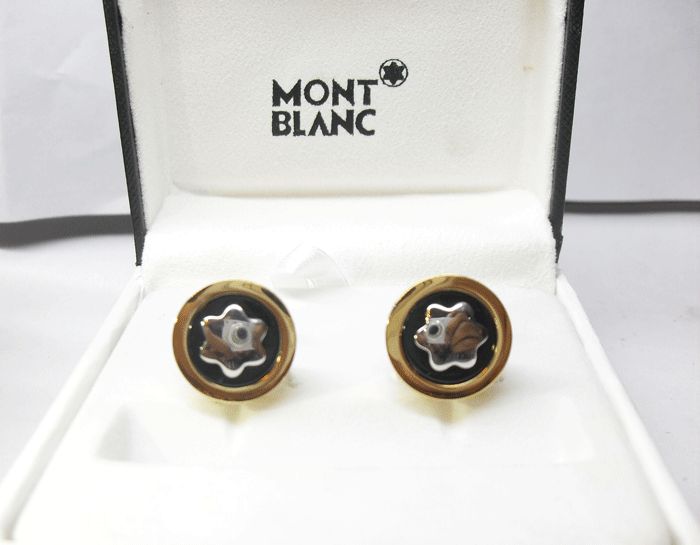FW
Prime Minister Nguyen Tan Dung and President of the European Commission (EC) Jean-Claude Juncker were present at the signing ceremony of the trade pact between both these nations. The event was celebrated as the 25th anniversary of the Vietnam-EU diplomatic ties.
Vietnam and the EU agreed to complete the process of the deal negotiations as soon as possible to put the pact into effect at the beginning of 2018. In October 2010, the Prime Minister of Vietnam and the EC President agreed to commence talks on the EVFTA after completing all necessary technical procedures. The two sides announced the official launch of negotiations on June 26, 2012. After nearly three years with 14 official rounds of talks and multiple mid-term negotiations at ministerial, head of delegation, and working levels, Vietnam and the EU finally completed the negotiations on trade pact.
The EVFTA is an inclusive and high quality agreement that ensures the balance of interests for both Vietnam and the EU, with due consideration of the gap of development between the two sides. The pact covers the trade in goods, rules of origin, customs and trade facilitation, sanitary and phytosanitary measures, technical barriers in trade, trade in services, investment, trade remedies, competition, state-owned enterprises, government procurement, intellectual property, sustainable development, cooperation and capacity building, legal and institutional issues, as well as new approaches to investment protection and settlement of investment disputes.
Vietnam and the EU will eliminate tariffs on over 99 per cent of tariff lines. For the few remaining lines, the two sides will give each other a certain customs quota or partial reduction of customs tariff. The EU is currently the second biggest trade partner of Vietnam, with two-way trade increasing from $17.75 billion in 2010 to $36.8 billion in 2014. In the first half of 2015, bilateral trade topped $19.4 billion, a year-on-year rise of 11 per cent. Of which, Vietnam grossed $14.9 billion from exports to the EU and imported $4.5 billion worth of goods from the market.
evfta.com
The Taiwanese manufacturers of apparel fabrics, especially polyester and accessories, aim to explore South Asia as a major business destination with prime focus on Bangladesh. The players feel that there is a vast potential for fabrics business in Bangladesh since it is considered one of the top RMG exporters and sources fabrics as raw materials.
Many Taiwanese players showcased their strength at the Taiwan Textile Fairs South Asia 2015 held in Dhaka, Bangladesh. The first such expo was held on November 23 and 24, 2015, where best of Taiwan’s innovative and value-added fibres, yarns, fabrics, trimmings and apparels were displayed to the Bangladeshi visitors. The fair was organised by the Taiwan Textile Federation and the Bureau of Foreign Trade and represented by Worldex India Exhibition & Promotion in association with Bangladesh Knitwear Manufacturers and Exporters Association.
According to TTF Overseas Market Development Specialist Sean Tsai, the aim behind organising these kind of expos is to explore business opportunities in countries such as India, Bangladesh, and Sri Lanka which hold potential for knit and woven textile products (yarns and fabrics) like synthetic, fancy, functional, recycled, and eco-friendly, as well as garment accessories.
TTF, which also organised a buyer-seller meet in Bengaluru, India, aims to export around $500 million worth of functional textiles in the next five years to India. Currently, the bilateral trade between India and Taiwan has grown from $1.19 billion in 2001 to $6 billion in 2014. Some of the leading exporters and brands in India that are already sourcing from Taiwan include Shahi Exports, Gokaldas Images, Madura Garments, Wildkraft, Moxi Sports, and Proline India.
www.ttf.wordexindia.com
Stocks of RSWM have rallied 55 per cent this year although its net income is suffering due to heavy capital expenditure on expansion of denim capacity and spindles. RSWM is the largest polyester viscose yarn manufacturing in India. In addition, it has cotton yarn capacity and a large melange yarn capacity.
The company is well diversified within the textile sector. Over the last four or five years, RSWM added a lot of spindles and denim capacity, along with setting up a recycling polyester plant. The company owns Mayur Suitings and has Raymond, Siyaram and Welspun as its key domestic customers. Exports contribute 45 to 50 per cent to total revenue.
The long-term debt equity ratio is 1.6. Cash accruals are strong enough for the next four or five years to pay off all this debt. However, EBITDA margins are under pressure in the textile industry and these have to be expanded. The company is operating at 100 per cent capacity now. It has around 4.5 lakh spindles in operation and produces around 14 million meters of denim fabrics a year, which will go up to 21 million meters by March. Going forward the focus will be on value added products and exports.
rswm.in/
Aurora Specialty Textiles Group (ASTG) not only gave three presentations in the Digital Textile Zone but the company also launched its new Expressions canvas line at SGIA Expo 2015.
At the show, Aurora also unveiled its online ordering capabilities through its ecommerce platform. Visitors were also introduced to the company’s new Instagram site which was also launched at the show. The company’s presentation titled ‘Shed the Fear & Join the Fabric Revolution’ was about common misconceptions related to printing on textile products. Christian Smith, Aurora’s South Central Region Print Media Account Manager also advised the attendees on how to move successfully into printing on textiles. Meanwhile, Mark Shaneyfelt, Aurora’s Director of Sales and Marketing for Print Media, gave a presentation on ‘Profitable Trends in Fabric Printing’.
Shaneyfelt also spoke on a panel of industry experts about the growing interest in fabric substrates for digital printing. He said that response to our new optimized canvas line, Expressions, was very strong. “This parallels major trends we saw at the show, which include the dramatic increase in soft signage fabric printing and wide format printing. There’s a growing awareness of the impact digital textile printing is having, he added.
Auroratextile.com
To achieve its aim of supporting textile value chain partners across the country with design development and technical support, Aditya Birla Group, the world's largest viscose staple fibre (VSF) maker, is organising a conclave in Coimbatore. With this initiative, the company wants to help propel the country to be the world's top cloth manufacturing hub.
As part of the national drive, called Liva Accredited Partner Forum (LAPF), aimed at improving the entire gamut of the textile value-chain, Birla Cellulose -- the pulp and fibre division of Grasim will organise another such conclave in New Delhi followed by this Coimbatore event being held tomorrow.
The conclave is expected to witness a gathering of over 200 value-chain partners, including spinners, fabricators and processors. The company has also decided to partner with Mumbai-based Netcarrots to implement a customer relationship marketing programme for the stakeholders assembling in Coimbatore. The company has also tied up with Bombay Textile Research Association to undertake quality improvement programmes and stringent audits for the partners.
The LAPF programme already has around 250 members, including spinners, weavers, knitters and fabricators, with major participation from textile hubs such as Tirupur, Erode, Ludhiana, New Delhi, Kolkata, Surat and Bhiwandi near Mumbai, among others.
www.adityabirla.com
Bangladesh is ready to set up a ‘joint business council’ with the EU next year to boost trade with EU member countries. The business council will have representatives from 25 (out of 28) EU members and heads of different Bangladesh’ business chambers. The council plans to remove tariff and non-tariff barriers on Bangladesh products in the EU and expand Bangladesh’s sectors through European investments. The various Bangladesh business chambers to be a part of the council are: Federation of Bangladesh Chamber of Commerce and Industry (FBCCI), Dhaka Chamber of Commerce and Industry (DCCI), Chittagong Chamber of Commerce and Industry (CCCI), Metropolitan Chamber of Commerce and Industry (MCCI), Bangladesh Garments Manufacturers and Exporters Association (BGMEA) and Bangladesh Knitwear Manufacturers and Exporters Association (BKMEA).
As per the EU’s ambassador to Bangladesh, Pierre Mayaudon the council’s official meet will be held in Dhaka next February. The platform is expected to act as a catalyst to increase investments in Bangladesh. At the moment, Bangladesh is the largest exporter to the EU. In 2014-15, Bangladesh had exported products worth about $ 17.04 billion to the EU region. Every year, about 60 per cent of Bangladesh’s garment exports are directed to the EU. In fact, exports were expected to touch $20 billion in the previous year if the Euro had not been devalued. Being a developing country, exports from Bangladesh has enjoyed zero-duty benefit to the EU since 1971 under the EU’s scheme of ‘everything but arms’.
“Varying customer preferences in terms of style, design, and comfort are fuelling the demand for customised cufflinks globally. In response to the changing needs and demands of consumers, many manufacturers have introduced customized cufflinks, incorporating photos, monograms, and so on. The growing demand for customization is expected to drive the global cufflinks market in the forecast period.”

A latest report titled ‘Global Cufflinks Market Analysis 2015-2019’ by Research and Markets covers the growth prospects of the global cufflinks market with segmentations based on product types and retail formats. The report says that increasing online retailing is driving the sales of cufflinks, and the market is expected to reach a CAGR of over 9.87 per cent during the forecast period.
Reason behind rapid growth and key players

According to the report, the growth in online retailing has contributed to market growth and the rise in urbanization and per capita expenditure in developing countries also contribute to market growth. For instance, according to the Ministry of Statistics and Program Implementation, India's total disposable personal income grew by 5.7 per cent and reached $2,097.23 billion in 2014. This rise in GDP led to an increase in purchasing power among consumers.
The author recognises companies such as Louis Vuitton, Tiffany, Paul Smith, Cartier and Montblanc as the key players in the global cufflinks market. Other prominent vendors in the market include Armenta, Burberry, Chanel, Cufflinks.com, Dolce & Gabbana, Giorgio Armani, Gucci, Hugo Boss, Prada, Ralph Lauren, and Tateossian.
Customisation is the key to success
Commenting on the report, an analyst from the research team said, “Varying customer preferences in terms of style, design, and comfort are fuelling the demand for customised cufflinks globally. In response to the changing needs and demands of consumers, many manufacturers have introduced customized cufflinks, incorporating photos, monograms, and so on. The growing demand for customization is expected to drive the global cufflinks market in the forecast period.”
There is also a newfound demand for customised cufflinks that incorporate photos and monograms. Newer product ideas have also refreshed the demand for cufflinks. Further, the report states that as this is a niche market, competition is rife among vendors and often results in price wars.
The study was conducted using an objective combination of primary and secondary information including inputs from key participants in the industry. The report contains a comprehensive market and vendor landscape in addition to a SWOT analysis of the key vendors.
www.researchandmarkets.com
March 2016 will see the global yarn and fibre industry gather in Shanghai for the next edition of Yarn Expo Spring. Taking place from March 16 –18, 2016, the fair will be held across 10,000 sq. mtrs. in the National Exhibition and Convention Center. Following the success of the 2015 edition, a larger India pavilion will be organised by the Cotton Textiles Export Promotion Council (TEXPROCIL).
Alongside the India Pavilion, neighbours Pakistan will also feature with their own zone, showcasing competitively priced cotton yarns. Furthermore, following the successful first-time participation of a number of Uzbekistan exhibitors at this year’s Yarn Expo Autumn, where the competitiveness of their products in the Chinese market was emphasised, an increased participation is expected in 2016.
A feature of the 2015 Spring Edition was the increasing participation of synthetic and knitting yarn suppliers, particularly from Indonesia, Thailand and Singapore. In 2016, it is expected that more exhibitors of these products from China, Korea, Portugal and Taiwan will also feature at the fair to take advantage of the potential in the domestic market.
With four concurrent textile fairs under one roof, both exhibitors and buyers of Yarn Expo Spring can benefit from business opportunities at this unique industry event. The fairs, which will also run from March 16 – 18, 2016 include Intertextile Shanghai Apparel Fabrics – Spring Edition, Intertextile Shanghai Home Textiles – Spring Edition, PH Value and the China International Fashion Fair (CHIC).
www.messefrankfurt.com
VDMA member companies received an encouraging response at the recent ITMA 2015 trade fair that concluded in Milan last month, with 96 per cent of them expressing satisfaction over both the quantity and the quality of visitors to their booths.
Three out of four VDMA German companies were able to ink new deals during the show, which was the prime motive behind participating in the fair. The company demonstrated that sustainable textile production continues to be a major issue for the industry. According to the VDMA survey, energy and material efficiency were the topics in which customers showed highest interest. 72 per cent of the respondents said that it was a topic of high interest for the customers. Material efficiency ranked number two in the list.
Visitors from Bangladesh, India, Mexico, Pakistan and Turkey showed high demand for VDMA solutions. The company is continuing its series of conferences in dedicated markets. It is planning a forum based upon the theme of ‘German Technology meets Vietnamese Textiles’ in Hanoi on July 5, 2016 and Ho-Chi-Minh-City, on July 7 and 8, 2016, during which VDMA member companies will present their updated technologies to Vietnamese textile producers.
VDMA initiated official German pavilions will make their presence felt at INDO Intertex in Jakarta that takes place from April 27-30, 2016 and Techtextil North America to be held from May 3-5, 2016 in Atlanta. VDAM also expects a strong participation of German manufacturers in the leading textile machinery show in Asia ITMA ASIA + CITME 2016 that is scheduled to take place from October 21-25, 2016 in Shanghai.
www.vdma.org
IGATEX Pakistan 2016- the 9th International Garment, Textile Machinery & Accessories Exhibition will be held from April 20 to 23, 2016 at Expo Centre Lahore. Pakistan’s benchmark event showcasing latest innovations in the garment and textile industry is a pioneer and trendsetting exhibition that has been introducing textile machinery and technology in Pakistan.
The event has developed itself into one of the largest and well established garment, textile and leather machinery and accessories exhibition and conference in the South Asia and has emerged as an established platform in the textile industry which provides demonstrations of various cutting edge industry tools and technology.
Located at the crossroads of Asia, Pakistan has become a focal point for investors and has in recent years, gained recognition as an important market among other textile manufacturing countries of the region. Considered as one of the top 10 textile exporting countries of the world, Pakistan is the 4th largest producer of cotton yarn and cloth, and the 3rd largest player in Asia with a spinning capacity of 5 per cent of total world production. It also ranks 2nd in the export of yarn, 3rd in the export of cloth and contributes 3 per cent to the total textile trade of the world.
www.igatex.pk












